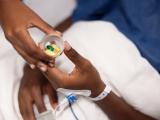A new study by researchers in the United Kingdom has found significant overdiagnosis of urinary tract infections (UTIs) and unnecessary antibiotic prescribing in a UK emergency department.
The single-center study, led by researchers from University College London, found that more than 90% of patients diagnosed as having a lower UTI in the emergency department at the Queen Elizabeth Hospital in Birmingham were prescribed an antibiotic. But retrospective analysis of patient symptoms and urine test results found that slightly more than a third of those patients had clinical or microbiological evidence of a UTI. And many who were admitted to the hospital continued to receive antibiotics.
The authors of the study, which will be presented at the European Congress of Clinical Microbiology and Infectious Diseases (ECCMID), which starts tomorrow in Amsterdam, say that although the results are based on cases at only one hospital, they suspect that overdiagnosis of UTIs in other UK emergency departments is common, since similar findings have been reported in other studies.
Findings highlight need for antibiotic review
To get an idea of how frequently UTIs are overdiagnosed, the researchers looked at the electronic health records of a subset of 1,000 patients with suspected UTI syndromes who attended the emergency department. The group analyzed information on clinical and demographic characteristics and antibiotic prescriptions.
They then compared the initial diagnosis made by the emergency department physician to a clinical diagnosis based on clinical symptoms, microbiologic outcomes of urine cultures, and ICD-10 diagnostic codes. Of the 943 patients available for the study, 289 received a diagnosis of UTI syndromes, including 56 cases of pyelonephritis, 42 cases of urosepsis, and 191 cases of lower UTI.
Empirical antibiotic treatment was offered for 173 patients (90.6%) with a diagnosis of lower UTI, but only 63 of those patients (36.4%) had clinical or microbiologic evidence of a UTI. Antibiotic treatment was recorded for almost all the pyelonephritis cases, but only 21 of 54 cases (38.9%) had clinical or microbiologic evidence to support the diagnosis. And only 11 of 42 urosepsis cases (26.2%) had clinical or microbiologic evidence to support the emergency department diagnosis.
Comparison of the ICD-10 codes of 83 patients who were admitted to the hospital with a lower UTI found that 41% had a primary diagnostic code for a non-infectious condition, which indicated antibiotics were not needed. Yet these patients were prescribed 8.1 antibiotic defined daily doses on average and were treated with antibiotics for a median of 7.5 days.
The authors conclude from these findings that focusing on antibiotic review in patients with an emergency department UTI diagnosis—to determine cases in which antibiotics can be stopped early—could help reduce inappropriate prescribing in secondary care. That's one of the principles outlined in Public Health England's "Start Smart – Then Focus" antibiotic stewardship toolkit for hospitals. It recommends reviewing the clinical diagnosis and the continuing need for antibiotics at 48 to 72 hours, and stopping them if there is no evidence of an infection.
"Our study highlights the potential impact on total antibiotic prescribing—and antibiotic resistance—that could be achieved by widespread adoption of such initiatives," lead study author Laura Shallcross, MBBS, PhD, MSc, a professor at University College London, said in an ECCMID press release.
See also:
Apr 12 ECCMID abstract
Apr 12 ECCMID poster
Apr 12 ECCMID press release























